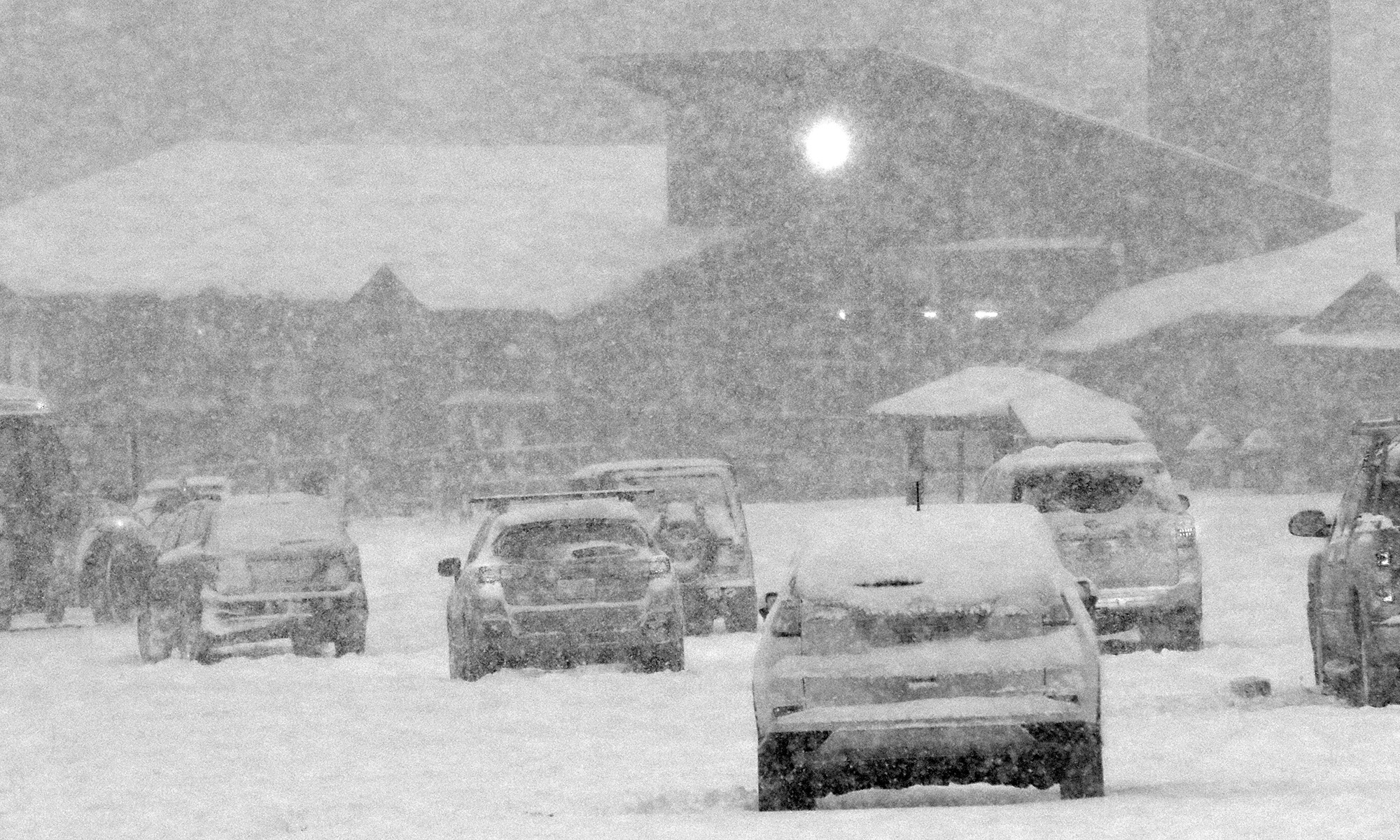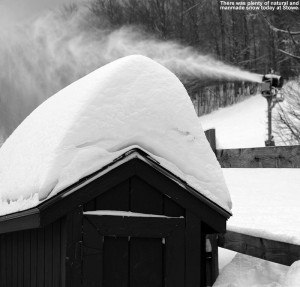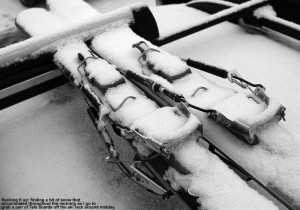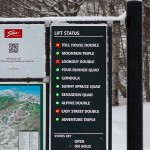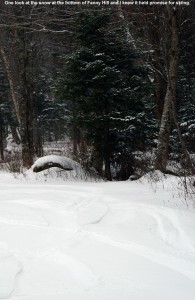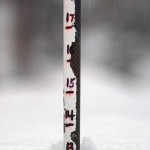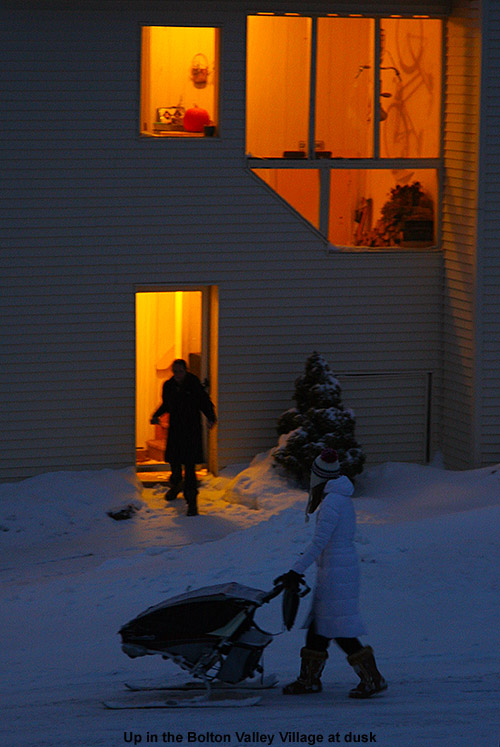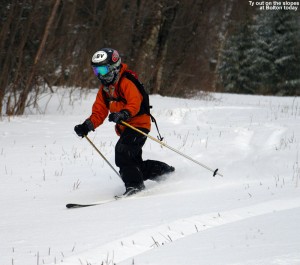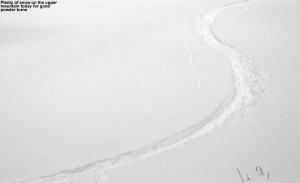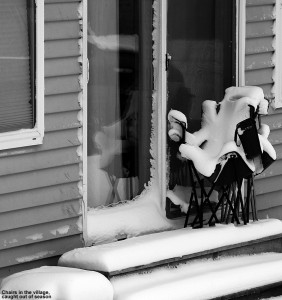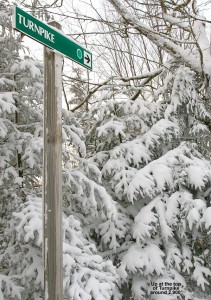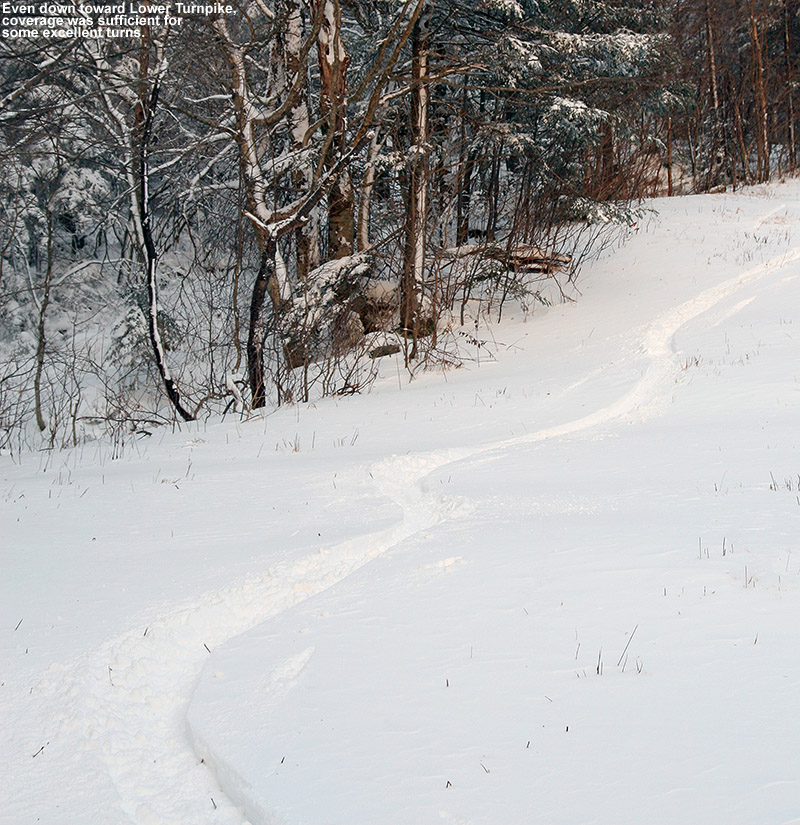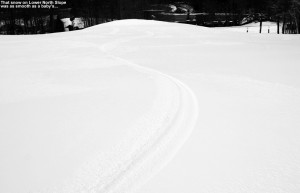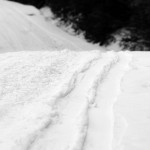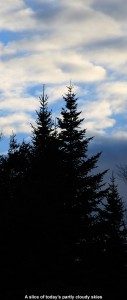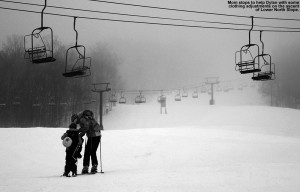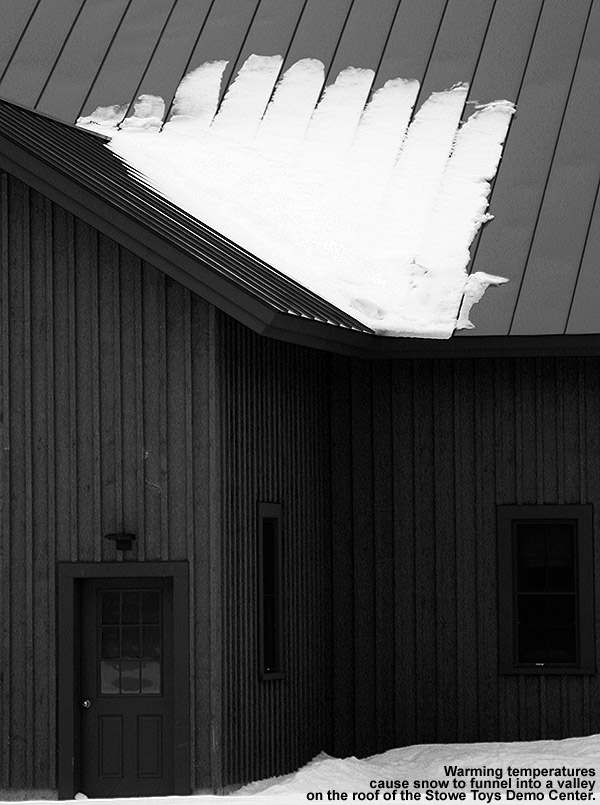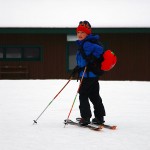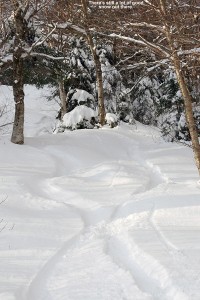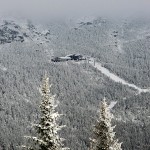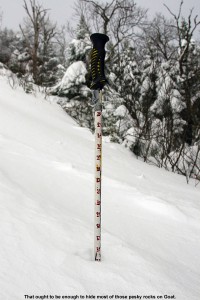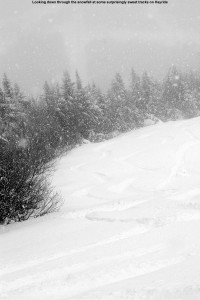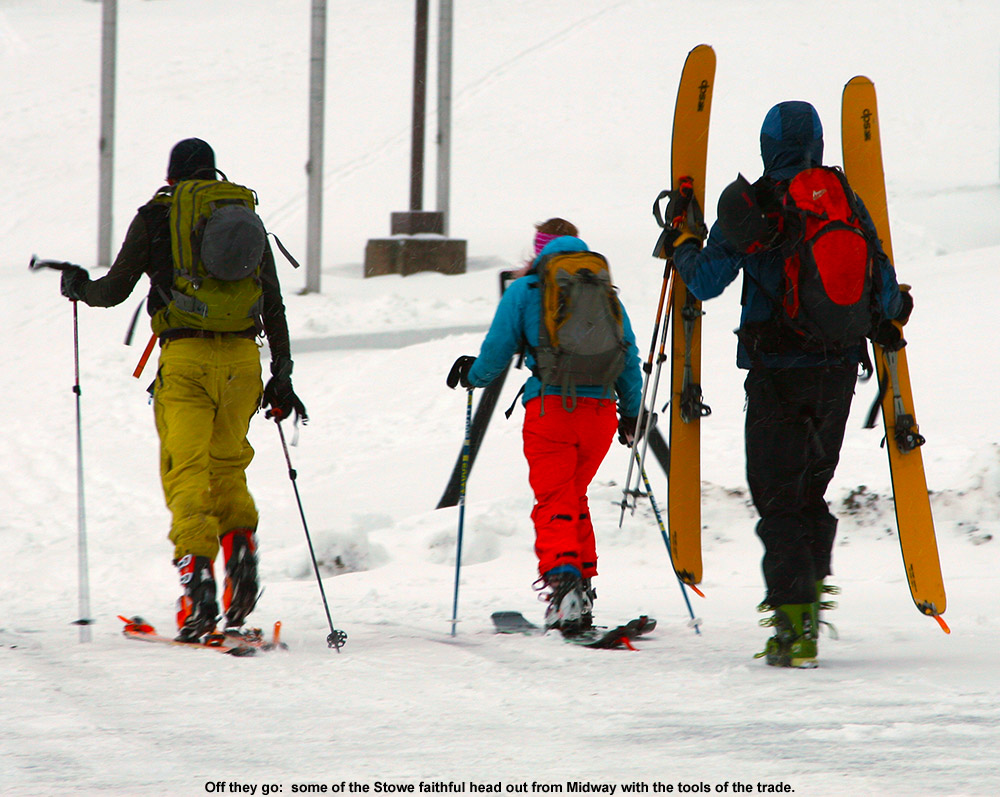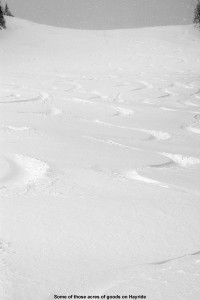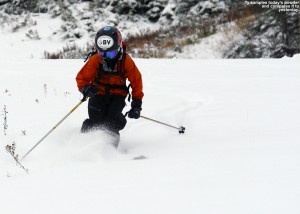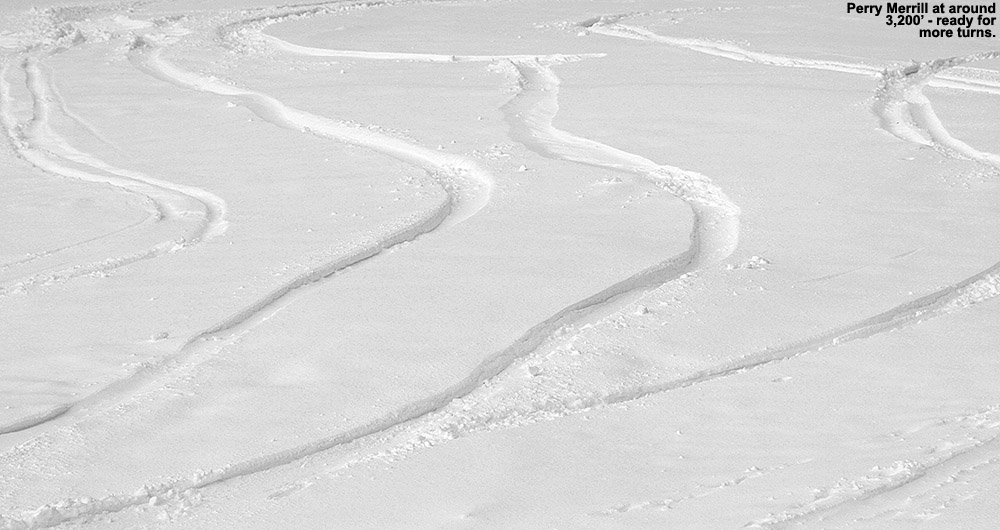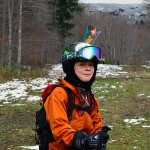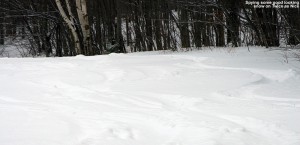
I stopped in at Bolton Valley this morning to check out the snow and make some turns, eager to see how the Timberline area was doing. Up to this point I’ve only skied the main mountain, because the snowpack down at the Timberline elevations was just a bit too marginal. The snowstorm we just had over the weekend was fairly significant though, with close to a foot of snow for the ski resorts in Northern Vermont, and with additional small rounds of fluffy snow topping things off this week, I suspected that Timberline would finally be ready for some turns.
Temperatures have warmed up significantly from where they’ve been over the past several days, and this morning’s valley temperatures in the mid 20s F were very nice. The shot of snow that we picked up this morning in association with a passing warm front had essentially dissipated by the time I was driving up to the hill, and I found just cloudy skies as I geared up for my ascent.
“…I set the AMPerages
together alpine style, then
schussed the next 30-40
feet of the headwall before
dropping into Tele turns in
the fluff along the skier’s
left of the trail.”
Right off the bat as I began my ascent behind the Timberline Lodge, I started probing the snow to get a sense of the depths and consistency. I found roughly 10 inches of powder in undisturbed areas just above the lodge, and it was indeed nice, but it only had a bit of a density gradient to it. The more surprising thing was that there was little if any base below the powder. There must not have been much snow down at those low elevations before the weekend storm. I followed a nice skin track that took the typical route, wrapping around the lodge and heading up the skier’s right of Twice as Nice. I saw some great-looking powder along the skier’s left of the trail which is more protected from the sun, but there continued to be little if any base along the skin track. That lack of base had me concerned, but once I was above 2,000’ it started to kick in even in the sunnier areas. I was getting snow depth readings of roughly a foot above that level, and there were at least a couple inches of dense base snow. At the mid station I looked toward the upper section of terrain and could tell that with the wind, it wasn’t really going to be worth the additional hike. I traversed across to assess the descent options, and although the tracks on Twice as Nice looked good, Spell Binder looked a bit better.
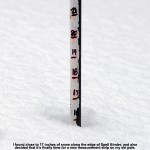 I switched over for the descent and side-stepped cautiously down the first 20 feet or so of the headwall. I could tell that the snow was thin in that area due to wind scouring, but below that it was much better. I had enough confidence in the coverage to ski the next section of the headwall, but I wanted maximum floatation just to be safe, so I set the AMPerages together alpine style, then schussed the next 30-40 feet of the headwall before dropping into Tele turns in the fluff along the skier’s left of the trail. It felt like the perfect melding of alpine and Telemark technique, and dropping the knee into those lower turns was oh so good. I did a couple of depth checks along the edge during the descent, and generally found at least a foot of snow, with up to 17 inches in one of the deeper spots. The powder there had that fantastic density gradient that delivers great turns. As is often the case, the Timberline area has managed to deliver some of the finest turns of the season so far.
I switched over for the descent and side-stepped cautiously down the first 20 feet or so of the headwall. I could tell that the snow was thin in that area due to wind scouring, but below that it was much better. I had enough confidence in the coverage to ski the next section of the headwall, but I wanted maximum floatation just to be safe, so I set the AMPerages together alpine style, then schussed the next 30-40 feet of the headwall before dropping into Tele turns in the fluff along the skier’s left of the trail. It felt like the perfect melding of alpine and Telemark technique, and dropping the knee into those lower turns was oh so good. I did a couple of depth checks along the edge during the descent, and generally found at least a foot of snow, with up to 17 inches in one of the deeper spots. The powder there had that fantastic density gradient that delivers great turns. As is often the case, the Timberline area has managed to deliver some of the finest turns of the season so far.
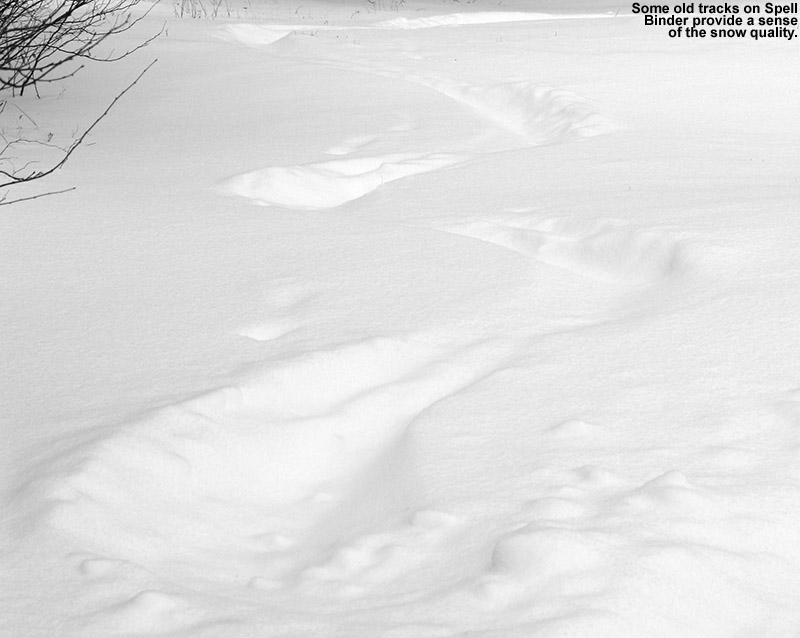
Down at the car, I ran into Brian, one of our graduate students, who was also catching a morning ski constitutional before heading to work. He’d taken Twice as Nice, and said that he had to be on his guard at times. He’s bigger than me, and his skis weren’t quite as wide as mine, but based on our conversation I think I’d give Spell Binder the nod on conditions. Temperatures warmed up to around the freezing mark down in the valley, and that felt nice. We’d supposedly got a big storm, or series of storms coming through the area this weekend, and although there’s going to be a lot of mixed precipitation, it could be a good snowpack builder as well. We’ll just have to see how it plays out.
